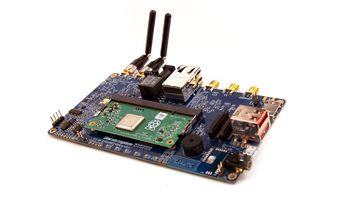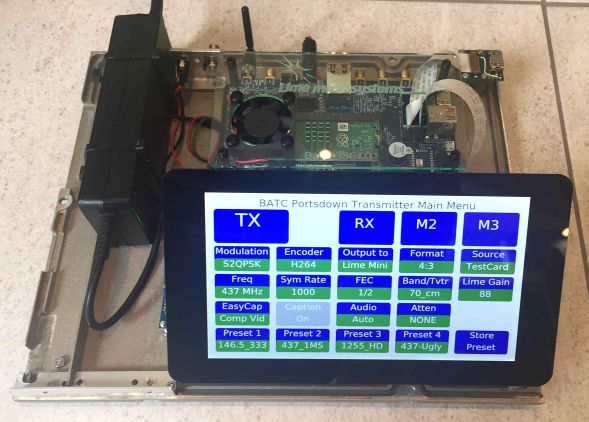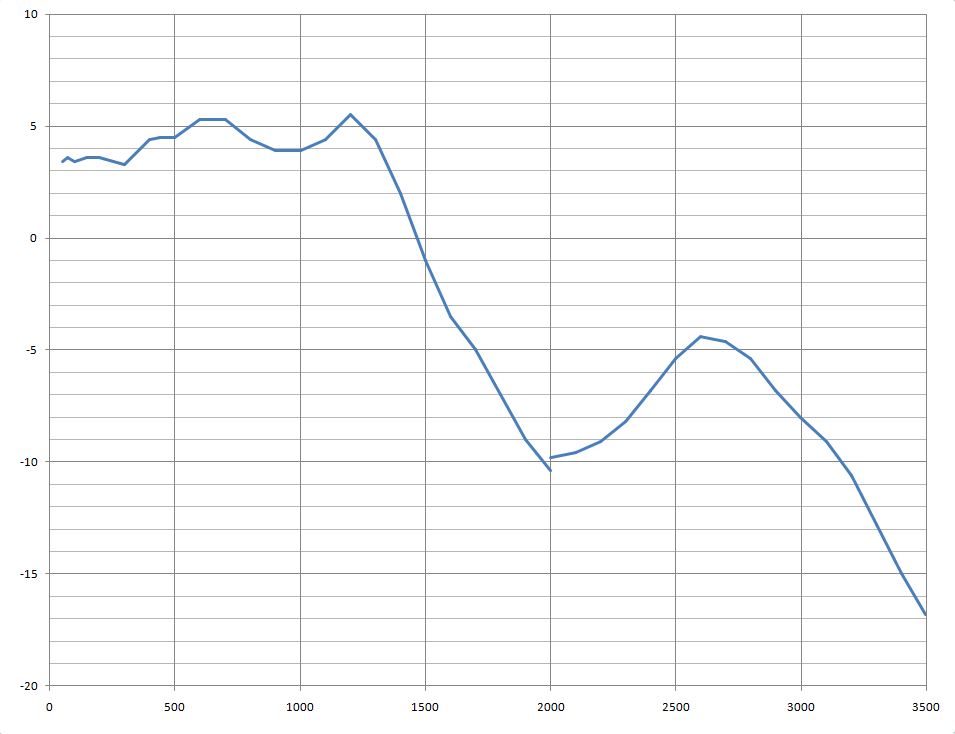Portsdown with the LimeNET Micro
The Portsdown software 201907070 instroduces basic support for the LimeNET Micro.
Image credit Lime Microsystems
The supported configuration is a LimeNET-Micro V2.1 with a 7 inch touchscreen. Use without the touchscreen might work, but is not supported. Optionally an RPi Camera (V2 model only) can also be connected the the LimeNET-Micro (NOT a V1 Camera - it does not work). Other supported video sources will include the EasyCap dongle and the C920 WebCam.
SD Card Configuration
A standard SD Card (either from the BATC Shop or built using these instructions Portsdown GitHub) can be used in the LimeNET Micro. On first-ever start-up it will reboot automatically twice before becoming operational. On the first start-up, it detects that it is connected to a LimeNET Micro and substitutes the correct Device Tree file for using the 7 inch screen. It then reboots to load this file, which enables it to detect the 7 inch screen. Having detected the screen, it changes the config file to use the 7 inch screen and then reboots to load this new configuration.
If the same SD Card is then taken back to a standard RPi 3 based Portsdown, it will detect that it is not in a LimeNET Micro, substitute the original device tree file and then reboot to load it. It then detects that there is no 7 inch screen, changes the config file for the Waveshare screen and reboots to load it.
During the software update process, the device tree file is normally over-written. If the update detects that it is being performed on a LimeNET Micro it then reloads the file required for the LimeNET Micro.
I have not tested it, but you should be able to build the Portsdown software within the on-board MMC module in a LimeNET Micro without an SD Card slot.
Power Output Levels
Although power output levels are similar to a LimeSDR Mini below 1500 MHz, the output power of a LimeNET Micro at 2400 MHz is significantly less. The LimeSDR Mini output level plot is here LimeSDR_Mini_Output_Power_Levels; this is the LimeNET Micro power output for DVB-S2, 333kS, Lime Gain = 88:
Limitations
The Lime Report and Firmware Update do not yet work. These need the latest version of LimeSuite, which I have not yet integrated because it needs testing with the LimeSDR Mini first and I have run out of time.
Operation
Select Lime Mini as the Output Mode.
Note that UGLY mode does not (and will not ever) work on the LimeNet Micro. However, there is no need for it as the LimeNET Micro is a far better modulator.
The fan (if fitted) is set to start whenever the device is transmitting (after the calibration delay). Outside transmit periods it is set to auto.


